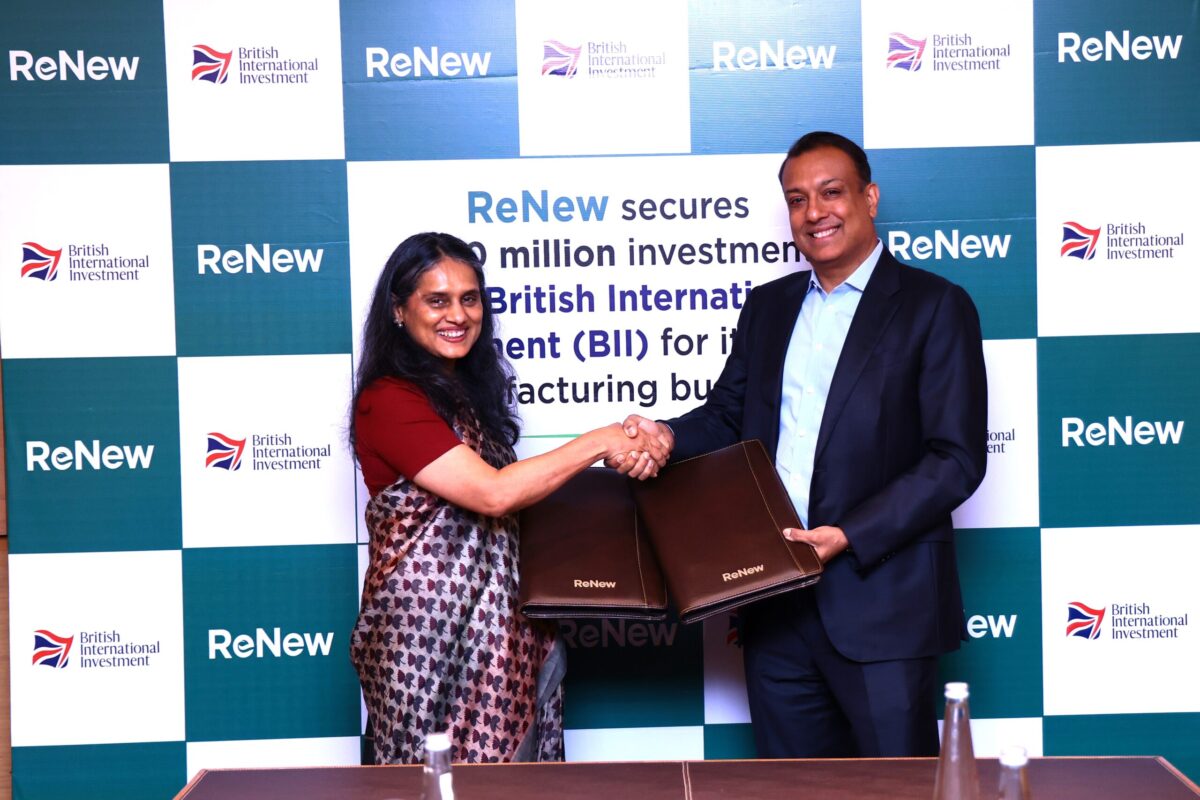Climate change is posing a serious threat to every species on this earth including humans. The advancements made over the years for the betterment and well-being of humans have ironically brought our planet to a critical juncture. To address the challenges presented by climate change, both developed and developing nations are taking concerted actions to minimize risks and mitigate the impacts.
One of the measures to achieve net-zero emissions and sustainability lies in transitioning from conventional energy sources to renewable and green energy alternatives. In this article, our primary focus will be on the transition process for businesses. We will delve into the entire life cycle of this transition, encompassing regulatory frameworks, strategies, and the requisite consideration of investments needed to facilitate this shift towards a more sustainable future.
EU’s CBAM: compelling reason for transition
The commitment made at the COP 26 climate conference in Glasgow marked a global determination to take concrete action towards achieving climate goals. At the forefront of this effort is the European Union (EU), which has set an ambitious target to achieve net-zero by 2050. This commitment is being realized through the implementation of the European Green Deal, which encompasses over fifteen new laws or changes in the existing legislation, collectively known as the ‘Fit for 55’ package. An important element of this package is the Carbon Border Adjustment Mechanism (CBAM), with the purpose of bringing a level playing field between domestically produced and imported products by complying with higher environmental and sustainability standards.
Effective May 16, 2023, the CBAM has entered into force, initiating a transitional period starting from October 1, 2023. This mechanism, for now, applies to various sectors, including steel, aluminium, cement, fertilizers, and hydrogen (as per reports, more products to be included later) with potential implications for Indian exporting companies. Reports suggest a potential 20-35% tax impact on these imports into the EU from January 1, 2026, which could significantly impact the exporting Indian entities which are currently subject to a duty of less than 3%.
Despite India’s relatively lower per capita emissions, CBAM may lead to trade diversions and business disruptions, necessitating urgent measures by the Indian industry to reduce carbon emissions and adopt more sustainable technologies. This may make Indian goods uncompetitive due to significant cost increases for European consumers.
What is India doing to minimise CBAM impact?
Response. In response to the challenges posed by CBAM, India has taken active steps, notably through the Energy Conservation (Amendment) Act, 2022. This amendment underscores the significance of carbon pricing and proposes the establishment of a Carbon Credit Trading Scheme (CCTS). This scheme aims to decarbonize the Indian economy and includes both the Compliance Carbon Market (CCM) and Voluntary Carbon Market (VCM) components.
Starting in 2026, the Carbon Market is also set to kick off. It will be interesting to witness how CCTS develops and how effective it will be in incentivising clean energy adoption. Most likely it will first focus on high-emitting sectors such as steel, iron ore, refineries, petrochemicals, and aluminium.
Additionally, India has also introduced the Green Credits Rules, 2023 to establish the Green Credit Program (GCP), which serves to incentivize environmental activities. Even though GCP is not mandatory (currently), these environmental activities may also reduce carbon emissions and earn carbon credits under the CCTS independently.
Evolving regulations. On the domestic front, India has also put in place regulatory requirements, including Environmental, Social, and Governance (ESG) reporting under the Business Responsibility and Sustainability Report (BRSR) framework prescribed by the Securities and Exchange Board of India (SEBI) as a part of listing disclosure requirements. This focus on ESG reporting highlights India’s growing recognition of the importance of sustainability factors. The reporting of BRSR is mandatory for the top 1000 companies (by market capitalization) from 2023-24.
Directors in Indian companies now also face increasing scrutiny regarding climate change liability under Section 166(2) of the Companies Act, 2013. Recent litigations have highlighted the imperative for directors to uphold environmental responsibility. While shareholders may not face direct liability, parent companies could be held accountable for climate change damages, particularly in exceptional cases.
Charting the ‘net zero’ path
A fundamental implication for companies aligning with the low carbon transition and net zero agenda, especially those in high emitting and hard-to-abate sectors such as cement and steel, is to ensure that their strategies are capable of supporting and driving profitable transition while remaining careful about regulatory compliance, operational changes, financial implications, marketing dynamics, reputational risks and opportunities, and talent management.
Low carbon transition may present both challenges and opportunities and there may be risks and costs involved however companies who proactively embarrass sustainability may not only create wealth for their stakeholders but also enhance their reputation.
Tailored transition strategies for businesses. Transition strategy is how companies articulate and plan their pathways from business as usual towards business activities and carbon performance which aligns with global goals towards net zero.
In essence, corporate transition involves recognizing, planning, acting, measuring, and staying accountable, the key elements of transition strategies are as follows:
- Clear Priorities: Recognizing the areas that require change in terms of priority, purpose, and performance is crucial.
- Planning for Change: plausibly deliverable plans that support the necessary changes.
- Measurement and information systems: Clear metrics for measuring and reporting are pre-requisite for the transitions. Some progress will be quantitative (e.g. absolute carbon emissions reductions and carbon intensity performance) and some will be qualitative (e.g. governance processes and financial decision making process evolution).
- Articulating Deliverable Action: Implement the planned actions and consistently report progress.
- Allowing for Course Correction: Realign when deviating from the intended path.
- Accountable and Transparent: Be responsible and transparent throughout the transition process.
How to navigate decisions and changes to business as usual? A key element to net zero strategies is that they require, especially in high emitting sectors, changes to current activities. In some areas, this might mean changing what activities the company undertakes, because there aren’t technology solutions that would allow a net zero pathway, in others, it may involve reconfiguring the current approach to align with carbon performance pathways.
Therefore, credible net zero strategies need to identify:
- Activities that the company currently undertakes that are incompatible with achieving net zero, and which will either need to cease over time or be significantly re-engineered or reorganised to align with a transition pathway.
- How managed decline will be achieved and compensated for through growth in net zero aligned areas.
- How the company’s investments will shift capital, R&D, and innovation towards sustainable growth areas.
- How the company identifies and seeks to address the financial impacts of climate-related risks and transitions, which will be likely to manifest in terms of short-, medium- and long-term impacts.
Being ahead of the wave. Companies that successfully anticipate and plan for forthcoming change are those most likely to successfully achieve transition. There are some key elements in any successful organisational change (whether it be driven by climate imperatives or other more conventional business challenges), these are:
- Action in advance – successful change tends to try to anticipate and pre-empt observable and predictable crises so that a company is in the best shape to either withstand disruption (through building resilience) or be placed to capitalise on significant economic or market shifts (e.g. through investment in processes and performance which becomes a new market norm).
- Acting early (enough) – to capitalise on first or second-mover advantages, rather than waiting until the last minute and being stranded when compared to peers and competitors.
- Investment in successful transition – which is likely to manifest in terms of elements such as: higher than sector average Capital Expenditure, increased R&D spending and the development or acquisition of relevant patents, a long-term strategic focus, and a structured and planned approach to decision making and transformation planning.
Financing the low-carbon shift
Companies seeking to achieve a successful net-zero transition should be aware of how investors and capital markets are orientating towards companies in hard-to-abate sectors. Such companies are likely to see:
- Capital Withdrawal: equity and fixed income investors withdrawing capital from companies which are not organising themselves to be or are not effectively achieving their first steps in climate transition. Such companies may face similar difficulties while looking for fresh capital.
- Credit Risk Adjustments: adjustments in the credit ratings of companies not following climate transition.
- Climate Performance Incentives and Costs: there is a growth in the investment sector climate performance credit and bond issuance, where companies seek investment to undertake significant shifts in business organisation to align with climate transition. Whilst these vary, they each link the cost of credit and bonds to agreed performance indicators, including reductions in carbon emission and improved carbon intensity performance.
Steps to be taken by Indian businesses
As companies may need to gear up for the CBAM reporting requirements, understanding the applicable goods and obtaining necessary information from suppliers become crucial. The CBAM Transitional Registry, along with guidance documents from the Taxation and Customs Union Directorate-General (for importers in the EU), provides essential support and helps to avoid penalties for untimely reporting or non-reporting. Also, addressing contractual considerations, reporting obligations, and accessing default values during the transitional period until July 31, 2024, becomes imperative for a smooth transition into the CBAM era.
Before initiating steps to mitigate the impact of CBAM, exporters, based on the experience and data available like as purchases, sales, customs, etc. should prepare an accurate quantifiable assessment to understand where they are and where they need to be. This involves calculating the overall impact of CBAM costs including procurement, production, supply chains, administrative governance, etc.
Based on this assessment, businesses will need to develop and execute a long-term transformation process. Most will need to consider choices related to filling the knowledge, talent, and skills gap.
Businesses must consider deploying low-carbon technologies while reviewing their global value chain and footprint as they relate to the EU region and CBAM. EU ETS implications should also be considered to determine cost optimization options and the strategy for investing in manufacturing installations to reduce emissions and transform to alternative products. As mentioned above, to achieve this, businesses and financiers will have to work closely together on these transition plans.
It may be good to scout for alternate markets however businesses may not be able to keep themselves immune from such regulations. Most developed economies are implementing policies similar to CBAM. Large companies with global supply chain footprints are also aggressively focusing on reducing their climate impact. Therefore while scouting for alternate markets, Businesses should also analyze the impact of CBAM on their business model and identify opportunities for strategic transformation to reduce the impact of CBAM or any other similar kind of laws that may be implemented in the future.
Conclusion
- Businesses must embrace transition by putting proper plans in place.
- To remain relevant, businesses must adhere to evolving rules and regulations.
- Businesses must have robust financial planning for transition.
Beyond CBAM, India’s environmental regulations are going beyond just complying with international measures. For instance, the BRSR framework mandates sustainability reporting for large companies, promoting transparency and accountability on environmental issues. This, along with potential director liability for environmental damage, incentivizes responsible business practices.
India is actively promoting climate-friendly investments (climate investment funds) and also issued its first Sovereign Green Bonds in 2023, attracting substantial interest and indicating a growing appetite for sustainable finance. These regulations, coupled with the growing importance of ESG factors in global finance, present both challenges and opportunities.
Indian exporting companies face a complex challenge – navigating stricter regulations while maintaining competitiveness. The success lies in embracing the sustainability imperative. By investing in cleaner technologies, adopting carbon pricing mechanisms, aligning with global ESG standards, and complying with reporting frameworks, Indian companies can not only mitigate CBAM risks but also unlock new market opportunities. The speed and effectiveness of implementing these changes will be crucial in determining India’s success. While there are vulnerabilities, particularly in high-carbon sectors, India’s growing focus on sustainability demonstrates its adaptability. By embracing these changes, Indian exporters can ensure their long-term viability in a world increasingly focused on a greener future.
The views and opinions expressed in this article are the author’s own, and do not necessarily reflect those held by pv magazine.
This content is protected by copyright and may not be reused. If you want to cooperate with us and would like to reuse some of our content, please contact: editors@pv-magazine.com.








Hello are you seeking a financial help ?We Offer Private, Commercial and Personal Loans with very Minimal annual Interest Rates as Low as 2.% within 1 year to 30 years repayment duration period to any part of the world. Our loans are well insured for maximum security is our priority. if you are Interested contact us via Email via: : (z a c h m 5 3 3 5 @ g m a i l . c o m ) W h a t s A p p + 1 4 0 9 9 9 5 3 9 3 0